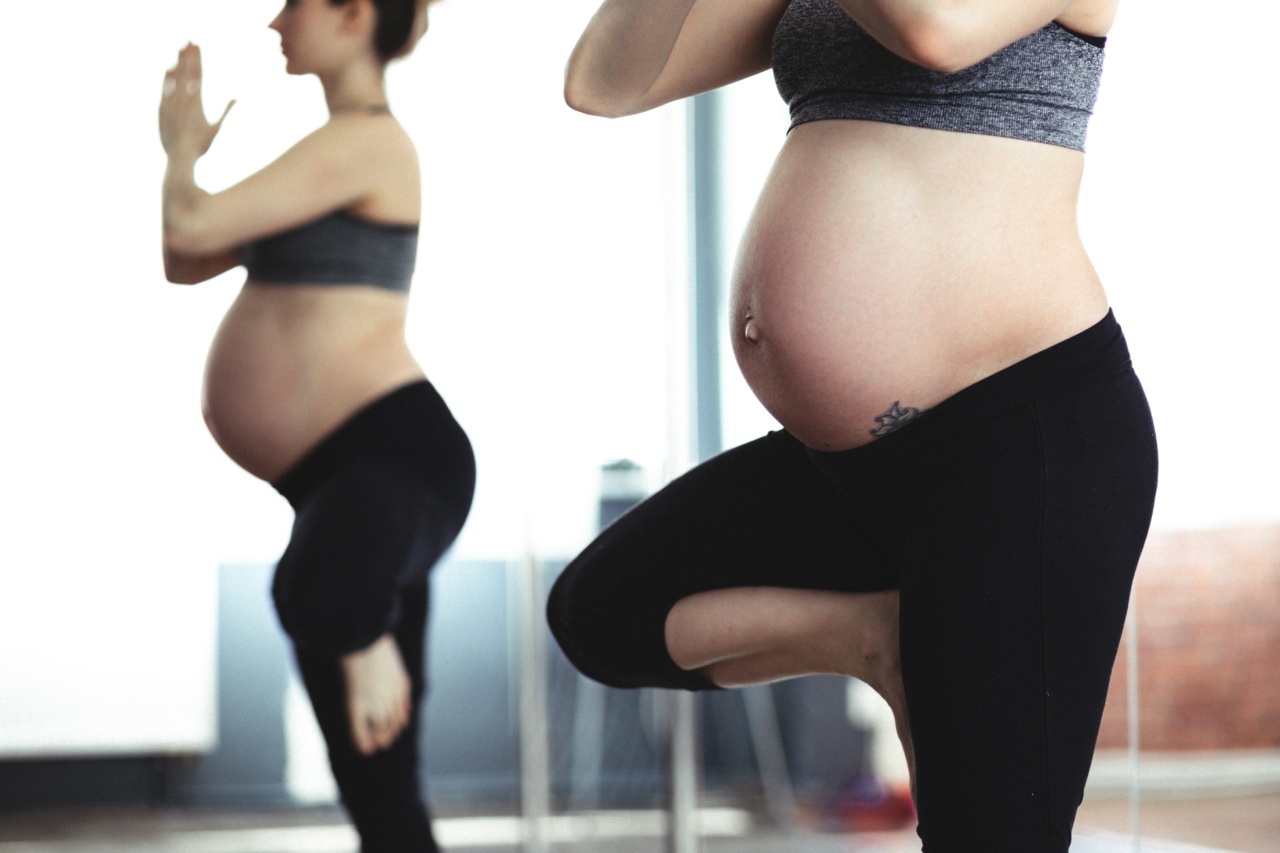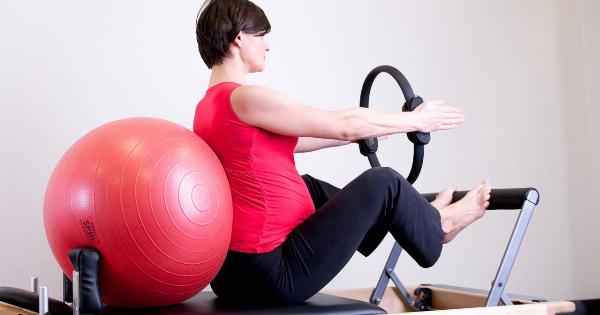Staying physically active during pregnancy is not only beneficial for the mother’s overall health and well-being but also for the development and growth of the baby.
Exercise during pregnancy can help reduce the risk of complications, improve mood, increase energy levels, and promote a faster recovery postpartum. However, it is crucial to consult with a healthcare professional before starting or continuing any exercise routine to ensure the safety of both the mother and the baby.
Benefits of Exercise During Pregnancy
Engaging in regular exercise during pregnancy can offer numerous benefits for both the mother and the baby. Here are some key advantages of staying active throughout this crucial period:.
1. Improved Stamina and Energy Levels
Regular physical activity, such as aerobic exercises, can help improve stamina and energy levels, making daily activities easier to manage.
Pregnancy can often lead to fatigue and low energy levels due to hormonal changes, but exercise can help combat these feelings and boost overall vitality.
2. Reduced Pregnancy Discomfort
Regular exercise can help alleviate common discomforts of pregnancy, such as backaches, constipation, bloating, and swelling.
Strengthening the muscles, particularly those supporting the back and pelvis, can provide relief from these discomforts and promote better posture.
3. Better Sleep Quality
Physical activity can help promote better sleep quality during pregnancy. However, it is important to avoid exercising too close to bedtime as it may lead to difficulty in falling asleep.
4. Increased Muscle Strength and Endurance
Exercise during pregnancy can help strengthen muscles and improve overall endurance. Strong muscles are particularly beneficial during labor and delivery, as they can assist in pushing and in maintaining proper positioning during childbirth.
5. Enhanced Mood and Reduced Depression
Physical activity triggers the release of endorphins, which are known as “feel-good” hormones. Regular exercise can help combat mood swings, reduce anxiety, and decrease the risk of antenatal (prepartum) and postpartum depression.
6. Maintained Healthy Weight Gain
Exercise plays a crucial role in managing a healthy weight gain during pregnancy. It can help prevent excessive weight gain, which is associated with an increased risk of gestational diabetes, hypertension, and other complications.
7. Lower Risk of Gestational Diabetes
Studies have shown that exercising during pregnancy can significantly reduce the risk of developing gestational diabetes.
Regular physical activity helps regulate blood sugar levels and improves insulin sensitivity, contributing to a healthier pregnancy.
8. Improved Circulation and Reduced Swelling
Engaging in low-impact exercises, such as walking or swimming, can improve circulation and reduce swelling in the lower extremities. It helps prevent the development of varicose veins and deep vein thrombosis, which are common during pregnancy.
9. Preparation for Labor and Delivery
Exercise during pregnancy can help prepare the body for labor and delivery.
Strengthening the core muscles, practicing deep breathing techniques, and performing pelvic floor exercises can all contribute to a smoother and more efficient birthing process.
10. Faster Recovery Postpartum
Maintaining an active lifestyle during pregnancy can aid in a faster recovery postpartum.
Strong muscles, improved endurance, and overall physical fitness resulting from regular exercise can assist in returning to pre-pregnancy shape and activities more quickly.
Safe Exercises During Pregnancy
While staying active during pregnancy is highly recommended, it is important to choose exercises that are safe for both the mother and the baby. Here are some exercises commonly considered safe during pregnancy:.
1. Walking
Walking is a low-impact and gentle exercise that can be easily incorporated into daily routine. It helps improve cardiovascular fitness, strengthens leg muscles, and boosts overall mood.
2. Swimming and Water Aerobics
Swimming and water aerobics are excellent choices for pregnant women as they provide resistance without putting stress on the joints. It helps alleviate swelling and provides a full-body workout.
3. Prenatal Yoga
Yoga designed specifically for pregnant women focuses on gentle stretching, relaxation, and breath control. It can improve flexibility, balance, and promote mental well-being.
4. Prenatal Pilates
Pilates helps strengthen the core muscles, which are essential for posture and stability during pregnancy. It also aids in maintaining a healthy weight and improving overall muscle tone.
5. Low-Impact Aerobics
Low-impact aerobic exercises, such as stationary cycling and using an elliptical machine, provide cardiovascular benefits without putting excessive stress on the joints. Ensure proper posture and avoid any jerky or bouncy movements.
6. Modified Strength Training
Strength training exercises, under professional guidance, can be beneficial during pregnancy. Use lighter weights and focus on maintaining correct form, avoiding heavy weights that strain the body.
7. Pelvic Floor Exercises
Exercises that target the pelvic floor muscles, such as Kegels, are highly recommended during and after pregnancy. Strengthening these muscles can help prevent urinary incontinence and support the organs as the baby grows.
8. Stretching and Relaxation
Regular stretching exercises help reduce muscle tension, improve flexibility, and promote relaxation. Joining prenatal stretching or relaxation classes can provide additional guidance and support.
Precautions and Tips
While exercising during pregnancy, it is important to keep the following precautions and tips in mind:.
1. Consult with a Healthcare Professional
Before starting or continuing any exercise routine, it is crucial to consult with a healthcare professional. They can offer personalized advice based on the individual’s medical history and the stage of pregnancy.
2. Stay Hydrated
Drink plenty of fluids before, during, and after exercise to prevent dehydration. Avoid overheating by choosing cool environments and wearing breathable clothing.
3. Avoid High-Impact Activities
Avoid activities that involve a high risk of falls, impact, or injury, such as contact sports, skiing, horseback riding, and intense jumping or bouncing movements.
4. Listen to Your Body
Pay attention to your body and adjust the intensity of exercises accordingly. If feeling tired or experiencing any discomfort, it is important to take breaks, modify activities, or stop if necessary.
5. Wear Supportive Clothing
Choose comfortable and supportive footwear to provide stability and cushioning. Wear a well-fitted sports bra that offers ample support to the breasts during exercise.
6. Warm-Up and Cool Down
Start each exercise session with a warm-up routine to prepare the body and gradually elevate the heart rate. End with a cool-down period to gradually lower the heart rate and stretching exercises to improve flexibility and prevent muscle soreness.
7. Avoid Exercises on Your Back
After the first trimester, it is advisable to avoid exercises that require lying flat on the back for an extended period. This position can compress a major vein, leading to decreased blood flow to the heart and the baby.
8. Monitor Heart Rate
Monitor heart rate during exercise to ensure it stays within a safe range. As a general guideline, aim to maintain a heart rate below 140 beats per minute.
However, individual variations may apply, and it is essential to consult with a healthcare professional for personalized recommendations.
Conclusion
Staying active during pregnancy offers numerous benefits for both the mother and the baby.
From improved stamina and lower risk of complications to enhanced mood and faster recovery postpartum, regular exercise plays a crucial role in supporting a healthy pregnancy journey. It is important to choose safe exercises, listen to the body’s signals, and consult with a healthcare professional for personalized guidance.
By prioritizing physical activity, pregnant women can maintain their overall well-being and set the foundation for a healthier future for themselves and their babies.





























